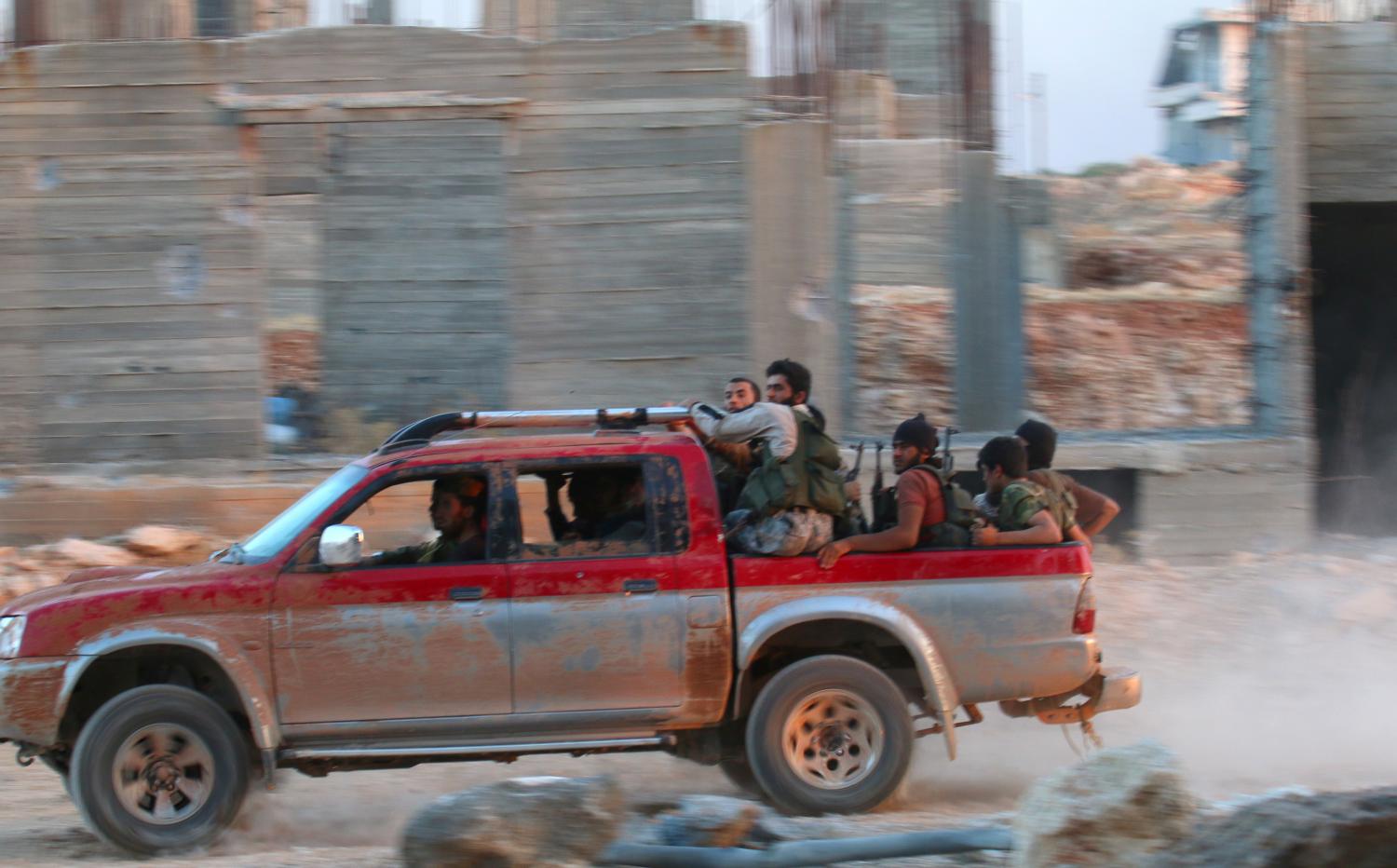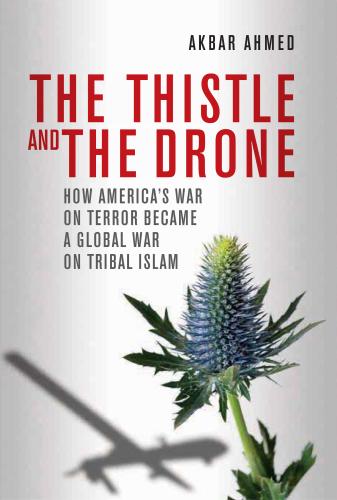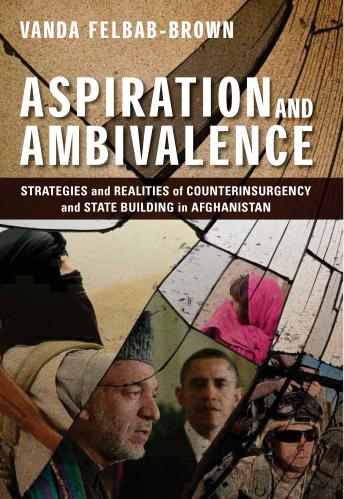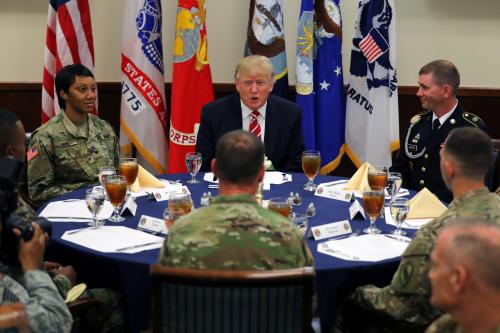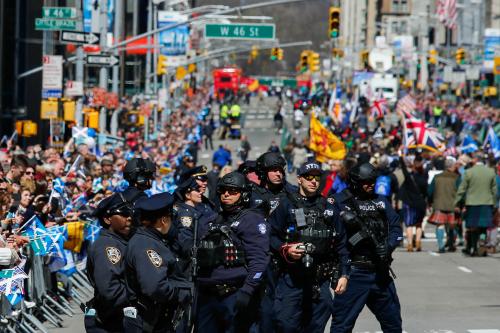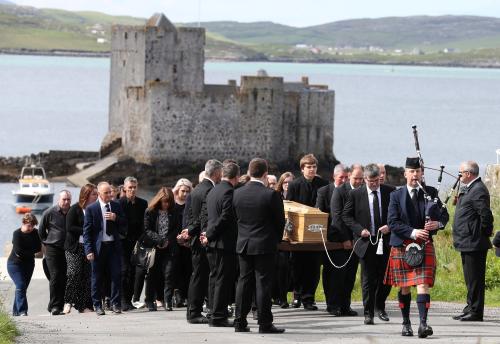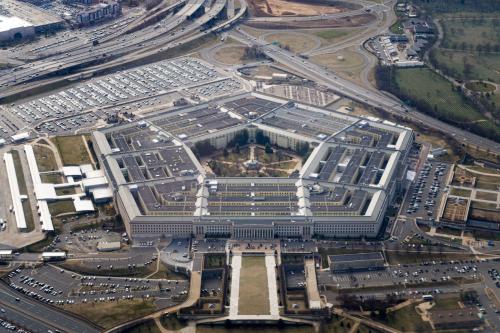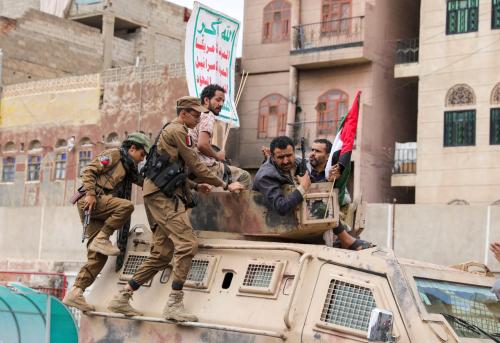Fighting terrorism has been at the top of the U.S. national-security agenda since 9/11, but the terrorism threat, and thus the appropriate means of counterterrorism, is often grossly misunderstood. Donald Trump must understand the changing nature of terrorism, revise U.S. policy in the Middle East, and address the domestic concerns of resilience and rising Muslim discrimination. This piece originally appeared on The National Interest.
Addressing the threat of terrorism, both real and perceived, will be a top priority for the Trump administration. Despite the dearth of Islamic State–directed attacks on U.S. soil, polls from earlier in 2016 showed that 73 percent of Americans saw the Islamic State as a “very serious” threat to the United States, and another 17 percent saw it as “moderately serious”—a rare priority that crosses political lines. Almost 80 percent believed the Islamic State has assets in the United States and the capacity to “launch a major terrorist attack against the U.S. at any time.”
Not surprisingly, terrorism is a political football. During the presidential campaign, Donald Trump regularly warned about “a major threat from radical Islamic terrorism,” and tweeted:
Our country is facing a major threat from radical Islamic terrorism. We better get very smart, and very tough, FAST, before it is too late!
— Donald J. Trump (@realDonaldTrump) December 9, 2015
Obama, he claimed, has boxed U.S. generals in with a “strategy that is destined to fail.”
Fighting terrorism has been at the top of the U.S. national-security agenda since 9/11, but the terrorism threat, and thus the appropriate means of counterterrorism, is often grossly misunderstood. The danger has evolved, and counterterrorism must change to keep pace. Today, the greatest challenges abroad require the United States to reorient its counterterrorism focus. Simply arresting and killing bad guys is at best treading water; instead, the United States must become more involved in working to stop or at least contain the civil wars that fuel radical movements. Ultimately, the most effective counterterrorism effort could be fostering better governance in troubled parts of the Middle East. At home, the challenges are even more complex: the election exposed failures of societal resilience and led to the public demonization of Muslims, both of which only further empower terrorist groups.
Fighting terrorism has been at the top of the U.S. national-security agenda since 9/11, but the terrorism threat, and thus the appropriate means of counterterrorism, is often grossly misunderstood.
Terrorist groups pose a far greater danger to U.S. interests in the Middle East than they do at home. The fact is that terrorism has changed over the years. With these changes in mind, I offer recommendations for the new administration both in its counterterrorism approach overseas and, more challenging, in its policies at home.
It is difficult to assess the danger of terrorism today because it varies so much by region. In the United States, the terrorism threat has been low since 9/11. Only 94 Americans have died from jihadist attacks—that’s 94 too many, but that’s far fewer than experts (including myself) anticipated in the weeks after 9/11. Indeed, if you exclude Omar Mateen’s 2016 attack on the Pulse nightclub in Orlando, which killed 49 people (over half the total homeland deaths from jihadists in the post-9/11 period), right-wing terrorists have killed more Americans since 2001. But we don’t hear much about that.
Part of why we don’t is that 9/11 was such a dominant event, and reporting of terrorist plots has skyrocketed since, particularly if the perpetrators have even weak links to jihadist groups like al-Qaida or the Islamic State. A more globalized media has meant that Islamic State attacks in Dhaka or al-Qaida attacks in Bali receive considerable press attention, to say nothing of more familiar foreign ground such as Paris or London. Although the terrorism problem in Europe is more severe than that facing the U.S. homeland, it may not exceed the level of past decades. The 1970s and 1980s saw far more attacks than there were in the post-9/11 era. Recent years have seen horrendous attacks, like the 2015 shootings and bombings in Paris that killed 130 people—but 1988 saw 440 people die, most of whom perished when Libyan agents bombed Pan Am 103.
The perception of danger is far greater than the reality. Even after fifteen years of intense counterterrorism efforts, 40 percent of Americans believe the ability of terrorists to launch a major attack on the United States is greater than it was at the time of the 9/11 attacks and another 31 percent believe it is merely the same.
While the American public has an exaggerated sense of the terrorism threat, there has been a surge in violence—it’s just not in the West. It is in South Asia, the Middle East, and Africa where the threat has intensified. Specific numbers are difficult to track because so many of the region’s terrorist groups are also engaged in civil wars in which hundreds of thousands have died. Much of the violence is technically not terrorism—but the confusion between terrorism and civil war illustrates the broader danger these groups pose to the region. Terrorist-linked war is not new to the Middle East, of course. Lebanon suffered a calamitous war in the 1970s and 1980s where Palestinian terrorists and Hezbollah were important players. Jihadists in Algeria fought a vicious civil war against the regime in the 1990s, where over one hundred thousand people died. Afghanistan, Nigeria, Sudan, and other countries in the region have long endured civil wars. Yet even with this bloody benchmark in mind, the numbers in recent years are far grimmer. Terrorists have contributed to and exploited civil wars that have killed more than one hundred thousand in Afghanistan, tens of thousands in Pakistan, tens of thousands in Nigeria, thousands in Yemen, thousands in Libya, and hundreds of thousands in Syria.
With this picture in mind, the challenges facing the United States can be broken down into three issues. The first, of course, is the real risk to American lives and those of U.S. allies. In absolute terms, these are small in the United States and only slightly larger in Europe. The average American is more likely to be shot by an armed toddler than killed by a terrorist.
The next danger is political. Trump scored many points playing up the threat of Muslim immigrants and Syrian refugees, with the terrorism danger—statistically low though it is—looming in the background. Defending America means more than defending American lives; it also means defending American values, including being a home to peaceful people of all religions, and welcoming refugees. In Europe, the politics are even nastier as xenophobic movements gain notable strength. In Europe, countries as diverse as the United Kingdom, France, Germany, Norway, Austria, Hungary, and Greece have seen a surge of anti-Muslim, anti-immigrant, right-wing nationalism.
The biggest danger, however, is to U.S. interests in Muslim parts of Asia, Africa, and the Middle East. Stability and governance have collapsed in many countries and are under threat in others. In addition to the human cost, this threatens the stability of U.S. partners and has led to dangerous confrontations, with countries like Saudi Arabia intervening in Yemen and otherwise ratcheting up regional tension in competition with Iran. The danger also allows U.S. allies like Egypt to resist the pressure to democratize, claiming that all forms of religious opposition are linked to terrorism.
Numbers give us a rough sense of the scale of the danger, but simple comparisons of present and past eras neglect how terrorist groups themselves have changed. Some of these dangers concern the groups themselves and their ideology, while others are about how they recruit, act, and thrive.
The primary groups opposing the United States have grown ever more radical. In the 1960s and 1970s, the United States faced an array of national-liberation and left-wing movements, including some, such as the Viet Cong, that blended the two together. Although such groups were often ruthless and vicious, their ultimate goal—self-determination—was comprehensible and even admirable to many Americans. Left-wing groups often represented more fringe voices, but they too had an ideology comprehensible to most Americans, and their actual use of violence was quite limited. In the 1980s, Hezbollah killed hundreds of Americans, but focused its violence on American troops and diplomats overseas—not civilians at home. Its state sponsors, namely Iran, made the group more formidable, but also placed limits on the scope and scale of its attacks. Iran recognized that if it crossed too many lines it might lead to a devastating U.S. reaction. Brian Jenkins, one of the pioneers in the study of terrorism, noted in 1988: “Thus far, terrorists seem to be more interested in having a lot of people watching, not a lot of people dead.”
This paradigm collapsed on 9/11, and the Islamic State has taken it at least one step further. Al-Qaida proved willing to kill thousands of civilians in order to drive home its message to the United States. Ever since, even though the group’s bloodiest attacks were more akin to the worst of the 1970s and 1980s, the assumption is that terrorists are bent on mass killing. Al-Qaida’s demands went beyond simple self-determination or a change in the political system for one country, and instead required the United States to withdraw completely from the Middle East. The Islamic State’s actions confirmed this trend. It embraces sexual slavery, beheadings, and mass executions of Muslim minorities and Sunnis it considers disloyal. So too are the Islamic State’s goals more radical: it seeks to create a caliphate, win a sectarian war in the region and bring about the apocalypse. Even al-Qaida considers the Islamic State too extreme. The former top American al-Qaida spokesman, the late Adam Gadahn, warned of “severe punishment” awaiting Islamic State fighters, both “in this world and the next,” for “the crimes [they have] committed against Muslims.” When a group responsible for killing thousands of innocent civilians criticizes another for being too violent, clearly the ante has been raised.
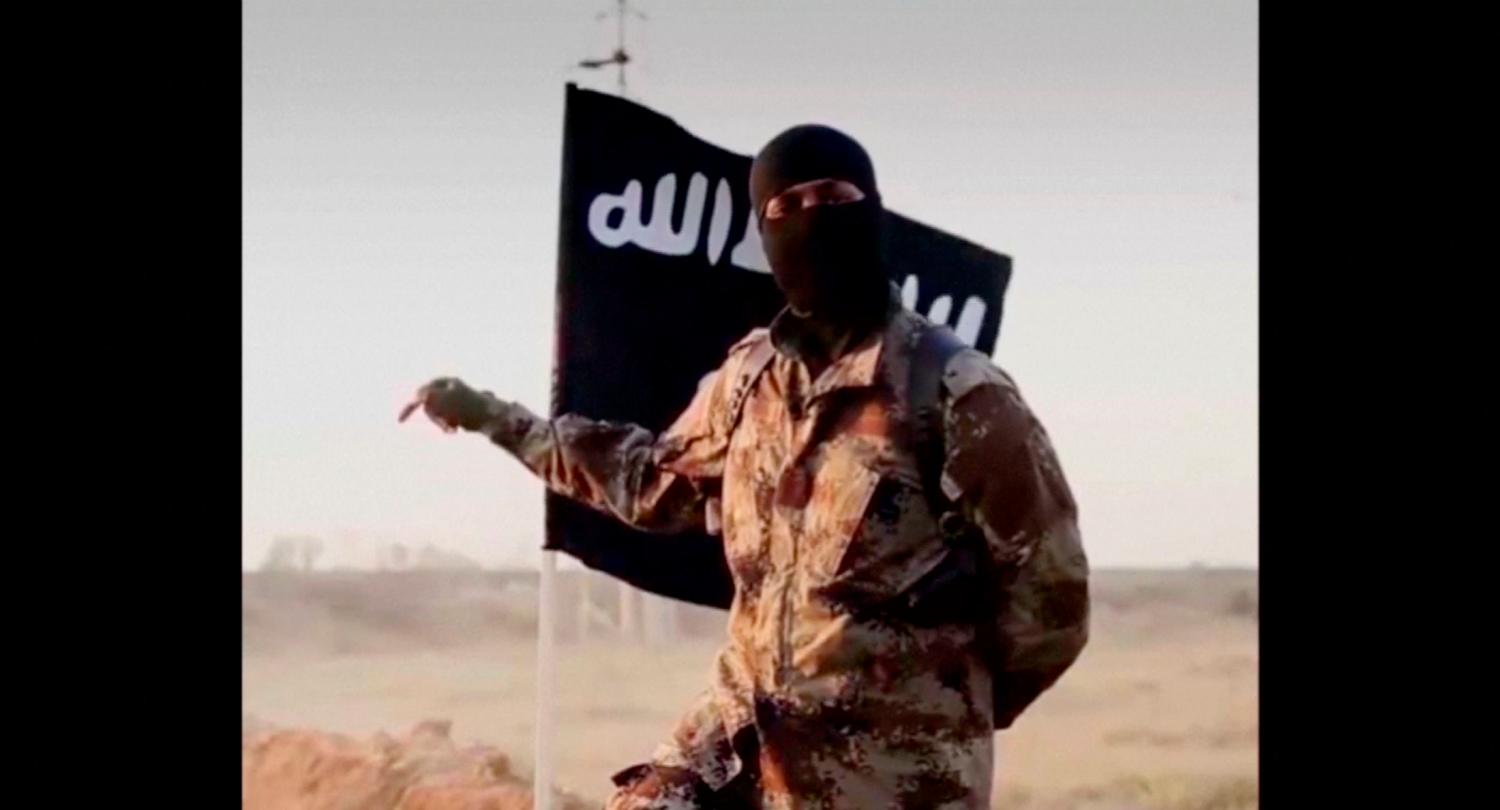
Concessions to the population centers from which terrorists drew proved important in fighting terrorism in the past. It will be far harder to accomplish these today. European governments did not make direct concessions to left-wing groups, but pro-union policies and political parties that favored social freedoms that impressionable youth embraced often took the wind out of the radical Left’s sails. Spain granted considerable autonomy to the Basque region, and the British government showered development spending on Northern Ireland while drafting a political deal that ensured Catholic rights. In the Middle East, however, the radical constituencies do not want political reform and are likely to exploit any relaxation of police states to expand their operations.
Key adversaries today also have a different focus than did those even a few years back. Although the Islamic State seeks to kill Americans and Europeans, its primary focus is on the Middle East. It seeks to defend its self-proclaimed caliphate and expand it. The group’s regional enemies—Hezbollah, Turkey, Saudi Arabia and so on—consume much of its energy. It has enough capacity to attack Europe and inspire attacks on the United States, but the bulk of its efforts are local. In contrast, al-Qaida devoted far more attention to striking the United States—what Bin Laden called “the head of the snake”—and its allies in the West. Today, what’s left of al-Qaida is also more regional. Jabhat Fatah al-Sham (al-Qaida’s Syrian and most important affiliate, formerly known as Jabhat al-Nusra), recently announced it was severing ties with al-Qaida and would not attack the United States in the hopes of working more closely with, and eventually uniting, other Syrian opposition groups.
Yet even though al-Qaida and the Islamic State’s priorities are more local than global, their operations are vast. In the past, few groups could sustain a truly transnational presence. In contrast, al-Qaida and the Islamic State have local allies—what the Islamic State would call “provinces”—throughout the Muslim world. Operations by these groups draw attention to the group’s struggle and enable it to expand its war. Al-Qaida’s Yemen affiliate, for example, almost succeeded in downing a U.S. passenger plane in 2009, while the Islamic State’s province in the Sinai downed a Russian plane in 2015, killing 224 people.
Technological changes have made such vast operations more feasible. Anti-Soviet jihadists in Afghanistan struggled to produce a magazine that glorified their cause, and it took years for word of their struggle to spread. A decade later, al-Qaida would command operatives around the world from Afghanistan while issuing videos to the world’s media. The Islamic State put all this on steroids, issuing a vast stream of propaganda in at least twenty languages from Syria and exploiting social media to recruit and direct its operatives. The United Nations estimates that thirty thousand foreign fighters have gone to Iraq and Syria—more than all jihads in the past combined. Older groups also embrace information technology: Hezbollah even operates a television station. Terrorist groups can communicate—and thus direct recruits, proselytize and fundraise—far more easily and cost effectively than their predecessors. Such technology has also enabled the Islamic State to aggressively employ so-called “lone wolves”—individuals not directly under its command, but inspired by its message—to strike at the United States and Europe.
By far the biggest change is the linkage between terrorist groups and the control of territory. Hamas controls Gaza, Hezbollah has de facto sovereignty over much of Lebanon, al-Qaida affiliates like al-Shabaab in Somalia rule over parts of their country and, of course, the Islamic State at its peak in 2014 ruled lands roughly the size of Great Britain. Locals have regularly welcomed these groups even though they abhor their ideology. After years of civil war and anarchy, locals often embrace any form of law and order, no matter how extreme.
Such a shift is part of why these groups often have a more local and regional focus: having to run a government, enforce law and order, and provide services, even on a limited scale, is a drain on resources and time. In addition, groups often want to expand these havens while many are often under attack, requiring large military forces to defend them and claim more territory. Defeating such terrorist groups is difficult because they have more supporters and engage in a wide range of activities beyond just terrorism. Hezbollah is not just five guys in an underground cell seeking to construct a bomb: it also runs hospitals, schools, and government ministries.
Terrorism’s success often depends on the reaction of the government it is fighting and the foreign audience it seeks to influence. And here too the situation has changed, this time much for the worse. Since 9/11, keeping the U.S. homeland safe from mass-casualty terrorism is an understandable priority by which every president should be judged. But this concern has expanded to defining success as stopping all attacks on all Americans everywhere. The killing of three Americans at the Boston Marathon in 2013 shut down the city. After the attack, the House Committee on Homeland Security understandably launched an investigation, but, in a letter to the administration, the Republican committee leadership immediately claimed the failure to prevent the attack raised “serious questions about the efficacy of the federal counter-terrorism efforts.” One minor and amateurish attack, apparently, means failure. Even preventing limited strikes in dangerous areas like the 2012 attack in Benghazi that killed Amb. J. Christopher Stevens and three other Americans are political footballs. In contrast, Ronald Reagan suffered no major political penalty—and people rightly see him as tough on terrorism—despite Hezbollah attacks on U.S. Marines and diplomats in Lebanon that killed hundreds as well as the deaths of 270 people from Libya’s downing of Pam Am 103 in 1988. Americans are in no mood to accept that small attacks are difficult to prevent, that diplomats should be stationed in dangerous areas, and that low levels of terrorism at home are a sign of success, not failure.
Americans are in no mood to accept that small attacks are difficult to prevent, that diplomats should be stationed in dangerous areas, and that low levels of terrorism at home are a sign of success, not failure.
The new administration’s counterterrorism policies must preserve the best of the Obama administration’s efforts while meeting the evolving challenge. Building on the post-9/11 efforts of the Bush administration, the Obama administration has developed a combination of global intelligence gathering, security-service disruption, and targeted strikes (often by drones) that has hit terrorist groups, especially al-Qaida, hard. In areas where governments are strong, the United States works with partner security services to monitor, detain, arrest, and jail suspected terrorists. In places like Pakistan, Yemen, and Somalia, drone strikes on terrorist leaders eliminate hard-to-replace bomb makers and logisticians, and force those who survive into hiding. Together, such efforts make it far harder for hunted groups to engage in a global terrorism campaign: their members are often arrested worldwide, training becomes more difficult and exercising command exposes them to drone strikes. Indeed, part of the reason that al-Qaida and now the Islamic State turn to lone wolves is because it has proven difficult to use more organized terrorists to strike the United States.
In addition to continuing this campaign, the United States must exploit technological change as well as recognize the technological realities it cannot change. Although the United States can and should push technology companies to hinder egregious terrorist recruitment and operations, protecting the right of free speech and the proliferation of communications technologies remains a boon for groups that cannot be avoided. Terrorists will use the technology of their times, as it grows more advanced, so will they; on the other hand, the United States can take advantage of terrorists’ social-media output and otherwise use their digital footprints to track them. Such efforts are vital for identifying and stopping lone wolves, whose only indication of an impending attack might be a tweet or Facebook post that brings them to the attention of security services.
The biggest challenge for fighting terrorism today, however, concerns the control of territory. In areas where civil wars rage, the United States will have to step up and improve training programs for allied militaries and substate groups. America needs more competent good guys—or at least less-bad guys—to support in the Middle East and other danger zones. Such forces are necessary to push back the Islamic State and other groups on the ground and, even more difficult, to hold the territory as these groups respond with renewed attacks and guerrilla operations.
Addressing territorial control in the long term requires a fundamental shift from the Obama era. The Obama administration aggressively hunted terrorists throughout the Greater Middle East and Africa, yet remained hesitant to become bogged down in the swamp of Middle East politics. The result was an aggressive campaign to kill and arrest terrorists that was often divorced from the environment that allows them to breed and expand: civil war. Ending civil wars must feature centrally in future counterterrorism policy.
Ending civil wars must feature centrally in future counterterrorism policy.
Such a recommendation is easier in spirit than in practice. Military training programs in Syria and Iraq have often failed disastrously. After months or even years of training, U.S.-aided groups have fled in the face of the enemy. When the Islamic State took Mosul in June 2014, some thirty thousand well-armed Iraqi forces fled the city in the face of one thousand Islamic State fighters, leaving massive amounts of equipment behind, including Abrams tanks as well as small arms and ammunition. The Islamic State’s expansion occurred, in part, because Iraqi military forces were primarily Shiite and had little interest in defending local Sunnis, many of whom viewed them with hostility. In Sunni areas such as Mosul, residents often regarded the army as a puppet of Iran. The Iraqi officers did not command the respect of their troops and lacked professionalism. When they fled the battlefield, their troops quickly followed.
Training programs without broader reform will fail. Starting small will be essential. The United States will need to thoroughly vet small-unit leaders as well as senior officers. Improving governance is also vital. This is not usually a question of financial aid or broader democratization but rather of ensuring that corruption is kept to a minimum and basic services are provided.
At the same time, as the United States tries to rectify past failures, it must also exploit the Obama administration’s genuine successes. In the case of the Islamic State, the United States must also be prepared for the full collapse of the so-called caliphate, which has steadily seen its territory, recruitment of foreign fighters and funding dry up. Should it continue to lose ground, many of its local fighters will go underground, and some among the tens of thousands of foreigners will return to their homes or go to other countries, spreading terrorism. The group itself will encourage lone wolves as a way to show its own supporters, as well as its enemies, that it remains strong. In other words, victory will not be complete when Raqqa falls.
In other places, the best U.S. hope may be to contain the violence. Syria’s neighbors, for example, host millions of refugees, and several, such as Jordan, Lebanon, and Turkey, already face a considerable threat from terrorism. Aiding these countries’ counterterrorism services, assisting with border security and helping them bear the refugee burden all will make the terrorism problem less likely to spread and increase overall stability.
The United States cannot and should not be everywhere. Part of President-elect Trump’s job will be drawing lines between areas of strong and peripheral interests. Some might be better left to allies: France, for example, could continue to take the lead in parts of North and West Africa. Just as the American public should not empower amateurish or failed terrorist plots by overreacting, the next administration should direct its considerable, but still finite, power at actual threats.
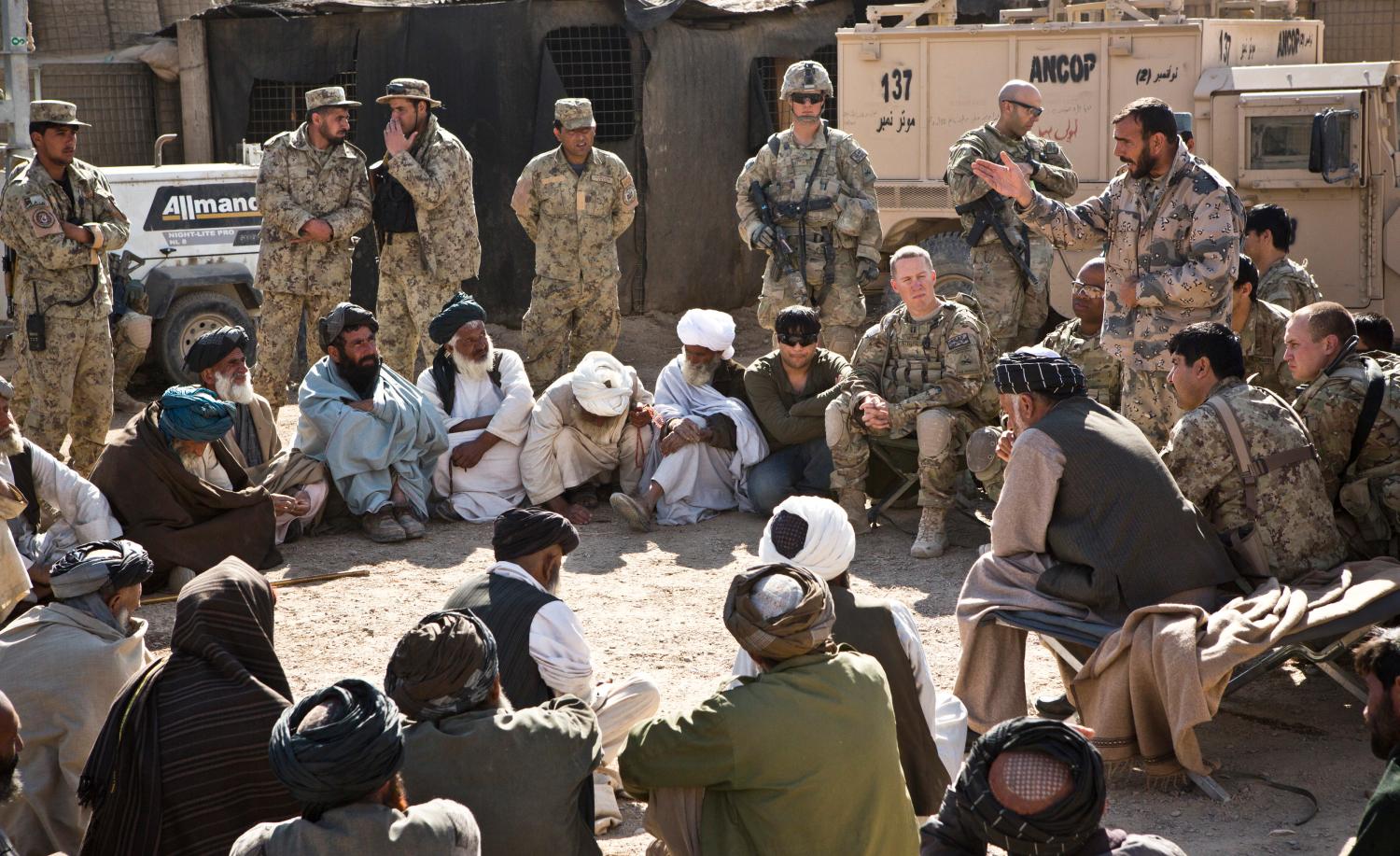
It may prove harder for the new president to navigate domestic waters than the shoals of the Middle East. Since 9/11, three of the biggest failures in U.S. counterterrorism policy have involved domestic politics.
The first is institutionalization. Under Presidents Bush and Obama, new and controversial counterterrorism instruments—targeted killings, increased domestic surveillance, aggressive FBI sting operations, detention without trial, and so on—are at the heart of counterterrorism. In addition, the United States is bombing the Islamic State in Iraq and especially in Syria with only dubious legal justification.
Since 9/11, counterterrorism policy has been decided by the executive branch and modified by the courts. One branch of government, perhaps the most important in the long term, has been AWOL under both Democratic and Republican leadership: the U.S. Congress. Regardless of whether you want to expand or shrink the above policies, public debate and legislation are vital. This puts the executive branch and the courts on a sounder footing and enables longer-term planning necessary for programs to develop properly. It also ensures that government lawyers do not have to tie themselves in knots or unnecessarily limit operations because the legal niceties are missing.
Yet this weak domestic base for counterterrorism reflects a second failure: resilience. Terrorism deaths at home since 9/11 have proven low, but fears of terrorism remain high. In a landmark speech in 2013 and in subsequent remarks, President Obama has tried to talk down the threat, describing al-Qaida as on “the path to defeat” and noting that another 9/11 is unlikely. He failed. Alarm over Islamic State atrocities, even though it did not directly involve the U.S. homeland (or even many American citizens), led to a spike in fear of terrorism. It remains easy for a terrorist group to sow fear and disrupt America: even small attacks like the Boston Marathon bombings paralyzed a major city. The new president will have to walk a fine line to assure the American people that he takes the threat seriously without stoking fears that play into the hands of terrorists.
Finally, this election risked jeopardizing one of America’s greatest counterterrorism successes: integration of immigrant communities. Muslims’ trust in the government and security services is low in many European countries. Add such a sense of humiliation to a surging Far Right political movement that constantly blasts Muslim immigrants and citizens, and the conditions for radicalization are strong. In contrast to Europe, the American Muslim community is far better integrated and regularly cooperates with law enforcement.
Unfortunately, Trump’s demonization of the American Muslim community will endure beyond the election even if he walks it back. This card is on the table, and other politicians are likely to pick it up. Ideally, the new president should press state and local officials to work with Muslim communities, not just to stop radicalism in their ranks but to protect them from right-wing extremists. Good relations, and a recognition that Muslims face daily security threats, will help ensure that radicalization remains low and that, when it occurs, the community cooperates with law enforcement.
Donald Trump has a lot on his hands. He must understand the changing nature of terrorism, revise U.S. policy in the Middle East, and address the domestic concerns of resilience and rising Muslim discrimination. While the primary counterterrorism challenge may well be the civil wars that fuel the worst groups today, and which certainly defy easy solutions, the incoming administration will inherit a tremendous counterterrorism apparatus. In spite of failures, inefficiencies and hard lessons, it has accomplished its primary objective for the last fifteen years: averting another 9/11. A stronger and improved counterterrorism policy can continue to keep the threat limited and, over time, diminish it further.

